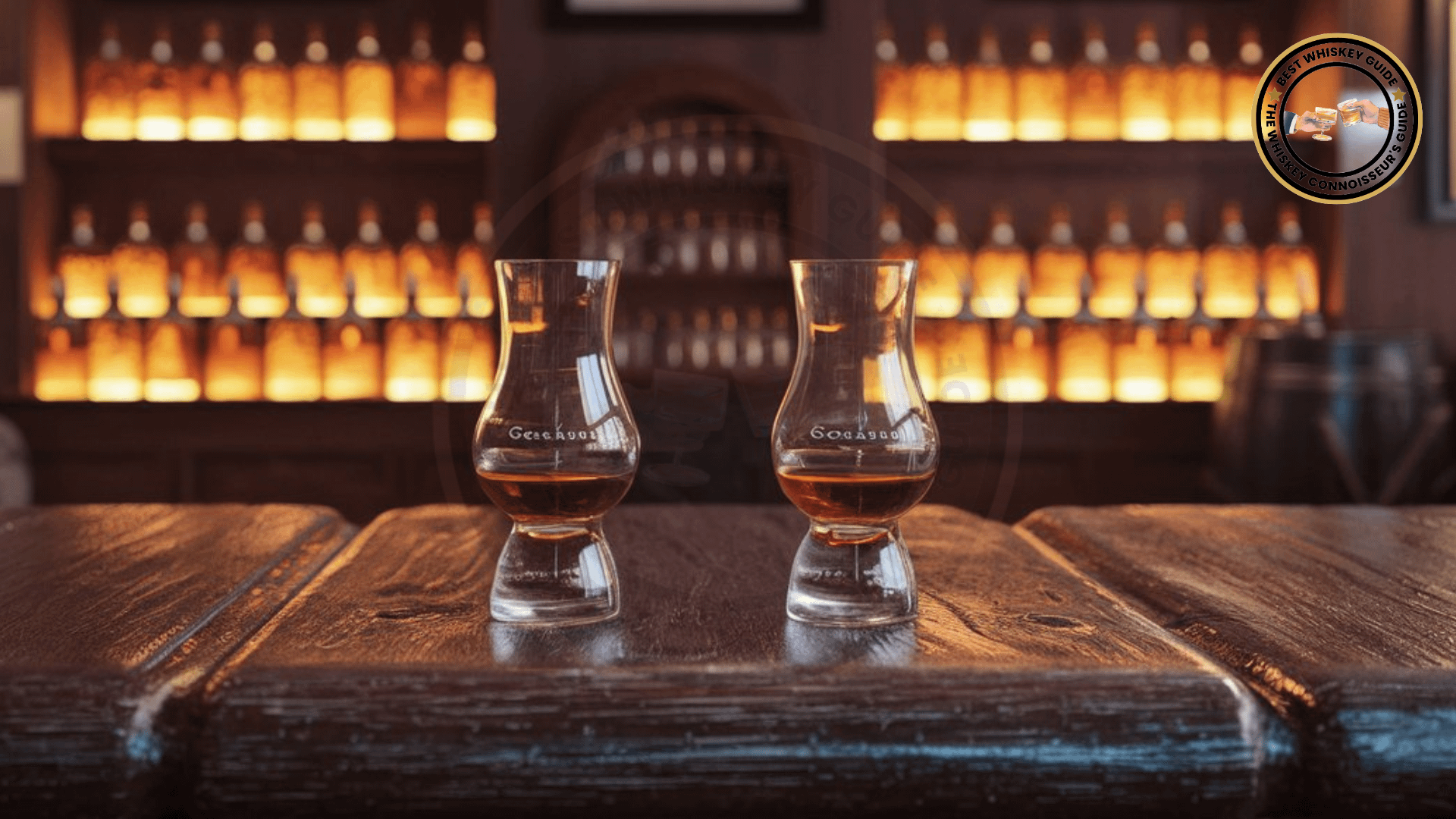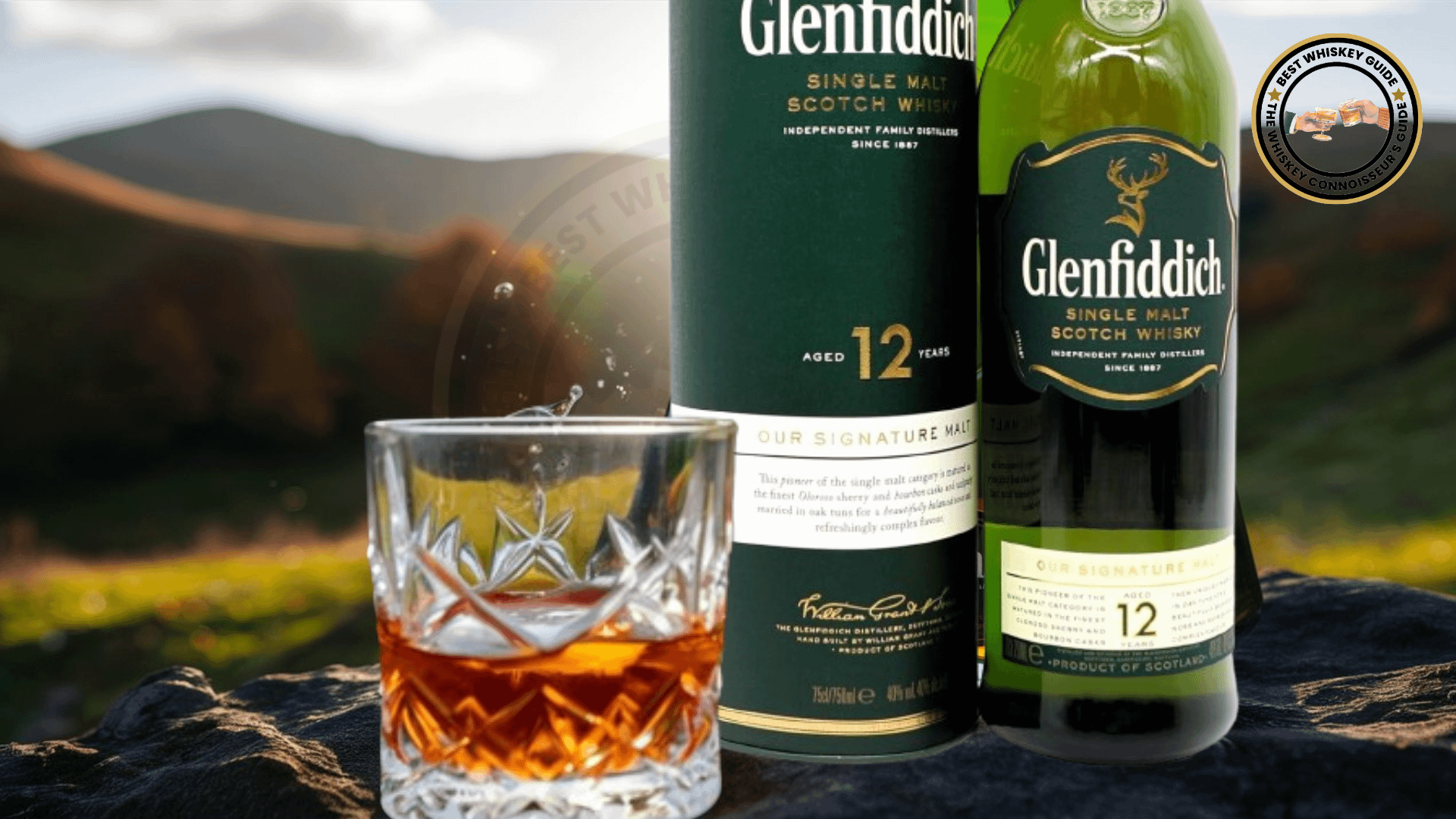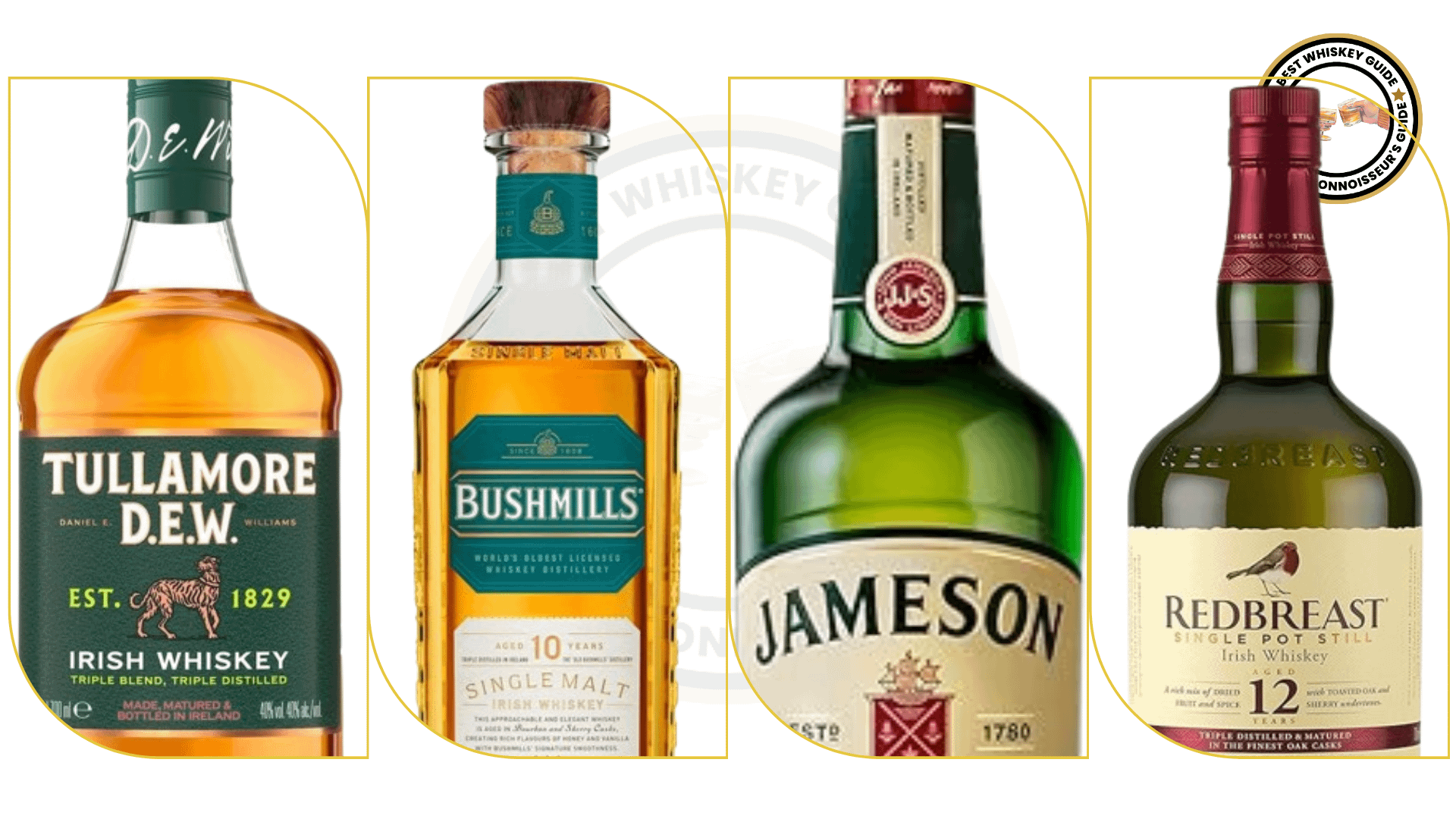The age-old debate among whiskey aficionados “Should whiskey be mixed with water“, enjoyed on the rocks, or savoured neat stirs up passionate discussions in tasting rooms and bars around the world. On one hand, traditionalists argue that the true essence of whiskey is best appreciated without any dilution, while others contend that a few drops of water or a cube of ice can unlock a spectrum of flavours otherwise muted in a neat pour. This conversation isn’t just casual banter; it’s backed by science, personal preferences, and a deep appreciation for the craft of whiskey making.
My journey through the world of whiskey has led me to many such debates, and I’ve had the pleasure of savouring this storied spirit in its myriad forms. From the smoky peat of an Islay single malt to the sweet, corn-rich bouquet of a Kentucky straight bourbon, I’ve explored the impact of water, ice, and temperature on these diverse profiles. Whether it’s a splash, a carefully measured droplet, or a single ice cube, the transformation in aroma and taste can be quite remarkable. As renowned whiskey author Michael Jackson once said, “Whisky is not a drink to be rushed. It is to be sipped and savoured, with each mouthful a new adventure.”

Should Whiskey Be Mixed With Water: Table of Contents

The Science Behind Mixing Whiskey with Water or Ice
When it comes to understanding how water and ice affect the taste of whiskey, we must delve into the complex world of chemistry. At the molecular level, whiskey is an intricate elixir composed of water, ethanol, and a myriad of flavour compounds (Karlsson & Friedman, 2017). These compounds, which include esters, aldehydes, phenols, and acids, are responsible for the whiskey’s distinctive aroma and taste profile. When water or ice is introduced to whiskey, it causes a shift in the balance of these molecules, particularly ethanol.
Dr. Bill Lumsden, Director of Distilling and Whisky Creation at Glenmorangie and Ardbeg, explains, “The addition of water alters the physical chemistry of whisky, which in turn affects its flavour. Dilution reduces the alcohol content, making the drink less ‘hot’ and more palatable. It also alters the texture, making it softer and more voluminous.”
Ethanol molecules are known for their hydrophobic, or ‘water-fearing’, properties. In a neat whiskey, ethanol clings to the flavour compounds, which can mask some of the subtler notes. By adding water, the ethanol’s grip is loosened, allowing these nuanced flavours to become more pronounced (Research Gate, 2017). This is because water decreases the concentration of ethanol, leading to a change in the solution’s volatility and surface tension, which in turn affects the release of aroma and flavour molecules.

Ice, in addition to diluting the whiskey as it melts, also cools the drink, which can affect the sensory experience differently compared to room-temperature water. Colder temperatures can suppress some of the more delicate flavours and aromas while also affecting the texture and mouthfeel of the whiskey.
The type of water used can also impact the flavour of the whiskey. Tap water may contain chlorine or other compounds that can alter the taste, while different mineral contents in spring or mineral water can subtly influence the whiskey’s profile. Distilled water is often recommended as a neutral option that won’t introduce any additional flavours.
Also Read: Can You Keep Whisky in the Freezer?
The Art of Diluting Whiskey with Water

The tradition of adding water or ice to whiskey is steeped in history, with roots that trace back to the very distilleries where whiskey was first crafted. Master distillers and blenders have long known that the careful addition of water or ice can enhance the sensory experience of whiskey, but the practice has evolved.
Historically, adding water was a method for distillers to adjust the alcohol content of their spirits for consistency and proofing (Whisky Advocate, 2019). In Scotland, the birthplace of some of the world’s most revered single malts, the ‘water of life’ – as whiskey is often called – has been enjoyed with a splash of water for centuries. This practice is not just a matter of preference but a nod to the craft of whiskey making, with many distilleries using the same water source for dilution as they do for production.
The rise of ice in whiskey is a more modern phenomenon, popularized by the growth of cocktail culture and the influence of American bourbon. Serving whiskey “on the rocks” has become a popular choice for many drinkers who enjoy the gradual dilution and cooling effect of ice on their dram. Today, the art of diluting whiskey with water or ice has evolved, with enthusiasts and experts alike advocating for different approaches based on personal preference, whiskey style, and occasion. The current trend leans towards personalisation, where drinkers are encouraged to experiment with different amounts of water, types of ice, and temperatures to find the perfect balance for their palate.
Does Adding Water to Whiskey Enhance the Flavour?
The consensus among many whiskey experts is that a few drops of water or a single ice cube can elevate the drinking experience by unlocking flavours that might otherwise remain hidden. This is particularly true for cask-strength whiskies, which can have alcohol contents as high as 60-70% ABV. At such high concentrations, the alcohol can overpower the palate, masking the subtle flavours developed during the ageing process.
Many renowned distilleries and whiskey brands advocate for the addition of a few drops of water to their cask-strength expressions. Laphroaig Distillery Manager John Campbell notes, “Laphroaig 10-Year-Old Cask Strength is a big, bold dram that benefits from a splash of water to open up its complex layers of peat, smoke, and sweetness.”
Other cask-strength whiskies that shine with a touch of water include:
- Aberlour A’bunadh: This sherried Speyside malt can reach up to 61% ABV, but a few drops of water help to tame its fire and reveal rich notes of dried fruit, dark chocolate, and spice.
- George T. Stagg: Part of Buffalo Trace’s esteemed Antique Collection, this powerhouse bourbon often clocks in at over 65% ABV. A splash of water helps to mellow its intense heat and unveil deep flavours of toffee, dark fruit, and oak.
- Redbreast 12-Year-Old Cask Strength: This Irish single-pot still whiskey sits at a robust 55-58% ABV. Adding a bit of water can soften its spicy kick and bring out its creamy, fruity character.
On the other hand, some whiskey enthusiasts argue that adding ice can dull the flavours and aromas of the whiskey, particularly if the ice is made from low-quality water or allowed to melt too much. The rapid cooling effect of ice can also numb the palate, making it harder to appreciate the whiskey’s nuances. However, the use of ice can be advantageous in certain situations, particularly when enjoying whiskey in a cocktail like a classic Whiskey Sour or on a hot day. The gradual dilution and cooling effect of ice can make the whiskey more refreshing and approachable while also softening the alcohol’s impact.
The Great Debate: Traditionalists vs. Whiskey Snobs vs. Casual Drinkers
The question of whether to add water and ice or enjoy whiskey neat sparks lively debate within the whiskey community. Traditionalists often insist that whiskey should only be consumed neat, arguing that any dilution or chilling is a distraction from the true essence of the spirit. They view the practice of adding water or ice as a sign of disrespect to the craftsmanship and history of whiskey production.
On the other end of the spectrum are the so-called “whiskey snobs” who insist that there is only one “correct” way to drink whiskey, often based on their personal preferences or the opinions of influential figures in the whiskey world. They may look down upon those who enjoy their whiskey on the rocks or mixed in a cocktail, viewing it as a lesser or uneducated approach to whiskey consumption.
However, the majority of whiskey drinkers fall somewhere in between these two extremes, as casual enthusiasts who appreciate the spirit in its many forms. They recognize that personal preference is the ultimate deciding factor and that the “right” way to drink whiskey is the way that brings the most enjoyment to the individual.
In truth, the diversity of opinions and practices surrounding whiskey dilution is a testament to the spirit’s versatility and broad appeal. Whether you’re a staunch neat advocate, a rocks devotee, or a splash of water supporter, the key is to approach whiskey with an open mind, a willingness to experiment, and a respect for the personal tastes of others.
A Whiskey Guide: How to Enjoy Your Dram
How to Add Water to Whiskey

If you’re keen on exploring the effects of water on your whiskey, here are some tips to guide you:
- Use a clean dropper or pipette: This allows for precise control over the amount of water added.
- Start small: Begin with just a few drops of water (about 1/4 tsp per ounce of whiskey) and gradually add more as needed.
- Experiment with different water types: Try distilled, spring, or even filtered tap water to see how each affects the flavour.
- Take notes: Keep track of your preferences for each whiskey to develop a personalized water-to-whiskey ratio.
Some whiskies that are particularly well-suited to the addition of water include cask-strength expressions like Knob Creek Small Batch, Laphroaig 10-Year-Old Cask Strength, and Kilbeggan Single Malt.
Beyond the Dropper: Specialized Water Delivery
For the serious whiskey enthusiast, there are a variety of specialized tools designed for precise water delivery:
- Water Pipettes: These slender glass tubes allow for drop-by-drop control over water addition.
- Whiskey Water Jugs: These small pitchers often feature a narrow spout for carefully pouring water into your dram.
- Whiskey Stones: While not water per se, these chilled stones can cool your whiskey without diluting it, offering a different way to temper the alcohol’s heat.
Ice in Whiskey: Pros and Cons
When it comes to adding ice to your whiskey, there are a few factors to consider:
Pros:
- Cooling effect can be refreshing
- Gradual dilution can open up flavours over time
- Can make higher-proof whiskies more approachable
Cons:
- Rapid chilling can numb flavours and aromas
- Excessive dilution can water down the whiskey
- Low-quality ice can introduce unwanted flavours
If you opt for ice, use large, clear cubes made from high-quality water to minimize dilution and avoid off-flavours.
The Ideal Ice: Shape and Size Matter
The shape and size of your ice can significantly impact your whiskey-drinking experience:
- Large Ice Cubes: Bigger ice cubes melt more slowly, allowing for a more gradual dilution that can open up the whiskey’s flavours over time.
- Ice Spheres: These large, spherical ice moulds minimize the surface area exposed to the whiskey, slowing down melting even further.
- Whiskey Stones: As mentioned earlier, these chilled stones can cool your whiskey without diluting it, offering a different way to temper the alcohol’s heat.
Ultimately, the “perfect” ice depends on your personal preferences and the specific whiskey you’re drinking.
Whiskey Glossary: Key Terms to Know
- Cask Strength: Whiskey bottled directly from the cask without dilution, often resulting in a higher alcohol content (typically 50-65% ABV).
- Mouthfeel: The physical sensations a whiskey creates in the mouth, such as texture, weight, and heat.
- Neat: Whiskey served at room temperature without adding water or ice.
- Phenols: Chemical compounds found in whiskey that can contribute to flavours and aromas like smoke, medicine, and leather.
- Proof: A measure of a whiskey’s alcohol content, with 100 proofs equating to 50% ABV.
Further Exploration: Whiskey Resources
If you’re interested in delving deeper into the world of whiskey, here are a few reputable resources to continue your journey:
- Whisky Advocate: A leading publication covering all aspects of whiskey, from production to tasting notes and industry news.
- The Scotch Malt Whisky Society: An international community of whiskey enthusiasts offering exclusive single-cask bottlings and tasting events.
- The Whisky Exchange: A renowned online retailer offering a vast selection of whiskies from around the world, along with expert tasting notes and resources.
By engaging with these resources and the broader whiskey community, you’ll continue to expand your knowledge and appreciation for this complex and fascinating spirit.
Conclusion: A Toast to Diversity and Discovery
In the end, the debate over whether whiskey should be mixed with water, ice, or enjoyed neat is one that will likely continue as long as whiskey is being poured. The beauty of this centuries-old spirit lies in its ability to be enjoyed in a myriad of ways, each offering a distinctive and rewarding experience.
As whiskey writer and expert Charles MacLean puts it, “Whisky is a very personal thing. The only right way to drink it is the way you like it best.”
So, let us raise a glass to the rich heritage, the artful science, and the diverse preferences that make the world of whiskey so endlessly fascinating. Whether neat, on the rocks, or with a splash of water, may your next dram be a delicious and enlightening journey. Slàinte!
References
Karlsson, B. C., & Friedman, R. (2017). Dilution of whisky – the molecular perspective. Scientific Reports, 7(1), 6489. https://doi.org/10.1038/s41598-017-06423-5
Scientific Reports. (2017). Dilution of whisky – the molecular perspective. https://www.nature.com/articles/s41598-017-06423-5





Leave a Reply